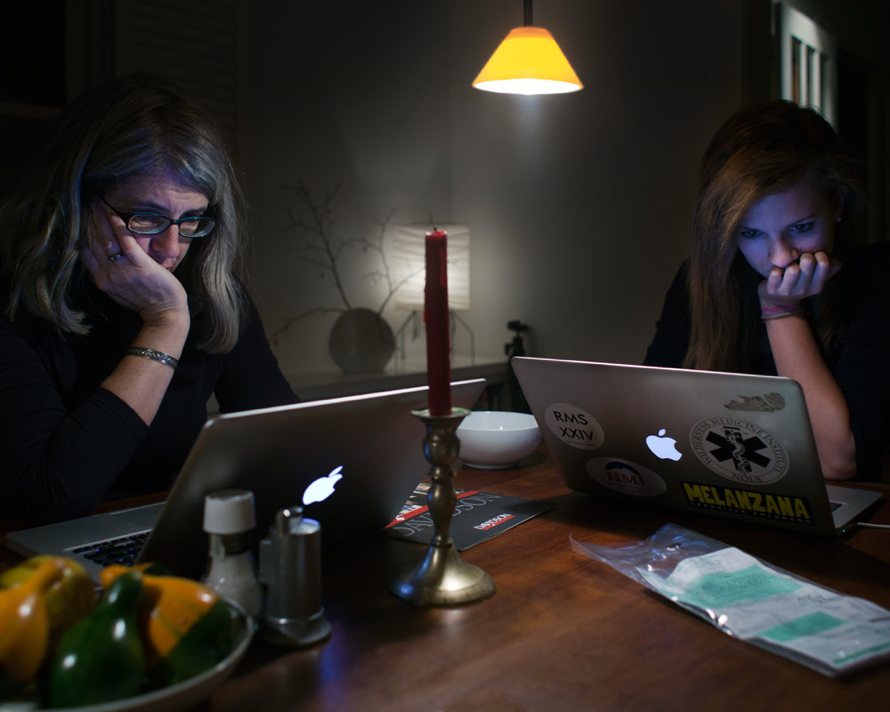House Music
When a photographer reviews 35 years of unposed family pictures—unexpected moments, children growing older—a symphony appears.

Interview by Rosecrans Baldwin
Photographer Charles Rozier writes of his project House Music: “These photographs are from a much larger 35-year series of unposed portraits of the people around me, mostly of my family. This project has driven most of my photography and remains a work in progress. I am in the process of assembling a selection of the images into a book, House Music, that will encompass a 25-year period in a narrative direction like a memoir without text.
“Though not staged, these images differ from the purely documentary in that they remain ambiguous; they are more likely to raise questions than give answers. In each picture I try to reveal an unexpected moment or undertone as seen in an ordinary but formally complete and evocative space.” Read the interview ↓
All images used with permission, copyright © the artist, all rights reserved.













Artist interview
The Morning News: What’s your ratio of bad pictures to good pictures?
Charles Rozier: I would guess that over the years there are maybe 30,000 images, of which I think about 300 are pretty good. So 100:1 overall? That said, the most recent ones are shot more carefully on 120 film so the ratio is better than that. I would say I get only around four to eight images per year that I really think are essential.
TMN: How has your family adapted to being photographed?
CR: Each one seems to deal with it in a different way. Resignation, subtle participation, irritation. And fortunately for me, a bit of obliviousness at times. This of course has been changing as the children grow older. I think the end of the House Music project is in sight, if not here already.
TMN: What’s your favorite camera at the moment?
CR: Voigtlander 667W. Maybe the last newly designed film camera.
TMN: Does a camera come between you and the subject?
CR: No question it does, but there are still the matters of degree and of effect. I don’t direct or interfere in any way with the observed scene, other than moving the occasional drinking glass out of the way. Always trying to be as unobtrusive as possible, I’ve worked with a few types of cameras from miniature to 35mm to medium format, and have learned that with patience one can even be ignored with a 6x7 as long as the shutter is quiet.
TMN: Name an artist you struggle to appreciate.
CR: A photographer? Who I know is good but that I don’t relate to well? I’m afraid to admit that Eggleston might be one, although I do respond to the landmark images. But the coolness and emotional distance generally put me off.
TMN: Do you take pictures with your cellphone?
CR: Definitely.
TMN: What does House Music mean?
CR: House Music is like a memoir, meant to take on a revealing, and occasionally haunting, narrative quality. It’s a book-length sequence of unposed images drawn from a more extended body of work; it spans the period from the birth of my family to the departure of my grown children, a world in which the house and its music are omnipresent.
TMN: What rules do you give yourself as an artist?
CR: No posing or tampering with the scene. No teeth (have to be flexible on that one). Standard lens angle of view, moderately wide, regardless of camera. No zooms. Standard aspect ratio (was 3:2, now 4:5 and 4:3 depending on camera). No fitting to subject. Work only on printing the few best images and forget the others.
TMN: Anna Karenina famously begins, “Happy families are all alike; every unhappy family is unhappy in its own way.”
CR: Perhaps this bears on the difference between what I am trying to do and what most snapshots are doing. It’s what my “no teeth” rule comes from. In order to show what is usually hidden, I wait for a moment of pause, of quiet. It’s not at all about unhappiness, but it does reveal itself more easily when a smile is not tensing the face.
